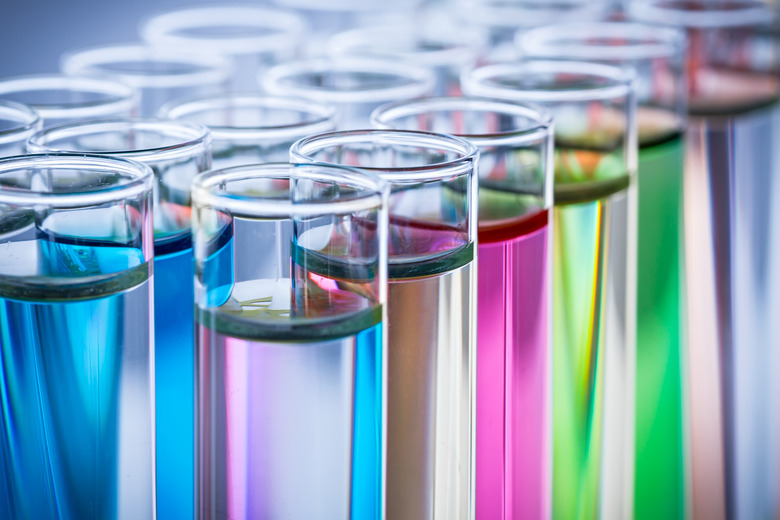Seven Things That Indicate A Chemical Change Is Occurring
Gas Bubbles Appear
Gas Bubbles Appear
Gas bubbles appear after a chemical reaction has occurred and the mixture becomes saturated with gas. The chemical change that creates the gas is completed after the gas bubbles leave the mixture. Examples of this type of reaction are when an antacid is dropped in a glass of water and begins to bubble or when boiling water bubbles.
Formation of a Precipitate
Formation of a Precipitate
A solid, known as a precipitate, that forms after two solutions are mixed is also a sign of a chemical change. The precipitate will sometimes fall to the bottom of the container or it may remain suspended in the mixture and make the mixture cloudy. An example of a precipitate formation is when magnesium and calcium oxides mix with water in plumbing and form deposits that clog the pipes.
Color Change
Color Change
Each chemical compound has a characteristic color. When the compound changes during a chemical reaction, the color may change as well. A color change does not always indicate that a chemical change has occurred since there are other factors that can contribute to a change in color. An example of a color change due to a chemical reaction is when a half eaten apple turns brown after it has been exposed to the air.
Temperature Change
Temperature Change
Energy is required to break and form chemical bonds. Chemical reactions that involve bond-breaking tend to absorb energy from the surroundings, making the surroundings cooler. Chemical reactions that involve making bonds release energy, which makes the surroundings hotter. An example of a temperature change in a chemical reaction is when a burning fire produces heat.
Production of Light
Production of Light
When energy is released due to a chemical change it sometimes creates a light source. This type of chemical reaction tends to occur in combustion reactions such as a fire or burning process. Man-made examples of a light being emitted due to a chemical change include fireworks, exploding in the sky and creating a colorful display. Natural examples include fireflies, which use a chemical reaction in their bodies to produce light.
Volume Change
Volume Change
Each chemical compound has a specific density. If the chemical compound changes due to a chemical reaction, the density changes as well. This causes the volume of the substance to recede or expand during the reaction process. If the volume changes too rapidly, it may cause an explosion. An example of a volume change due to a chemical reaction is when gas bubbles form in magma inside a volcano and expand too rapidly, leading to a volcanic eruption.
Change in Smell or Taste
Change in Smell or Taste
Each chemical compound has its own distinct smell or taste. When the compound changes after a chemical reaction, the taste or smell of the compound changes as well. An example of this is when fresh food that once smelled delicious slowly spoils and smells rotten. This bad smell sends a warning signal to the brain that tells the person not to eat the food.
Cite This Article
MLA
Brooks, Rebekah. "Seven Things That Indicate A Chemical Change Is Occurring" sciencing.com, https://www.sciencing.com/seven-things-indicate-chemical-change-occurring-12107532/. 28 April 2018.
APA
Brooks, Rebekah. (2018, April 28). Seven Things That Indicate A Chemical Change Is Occurring. sciencing.com. Retrieved from https://www.sciencing.com/seven-things-indicate-chemical-change-occurring-12107532/
Chicago
Brooks, Rebekah. Seven Things That Indicate A Chemical Change Is Occurring last modified August 30, 2022. https://www.sciencing.com/seven-things-indicate-chemical-change-occurring-12107532/
